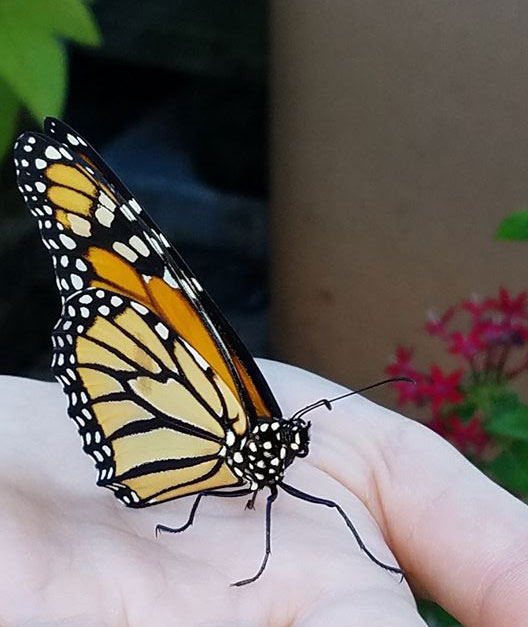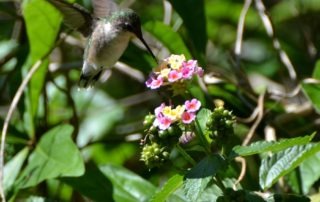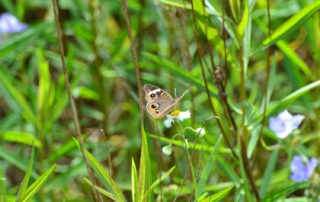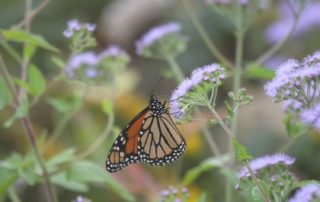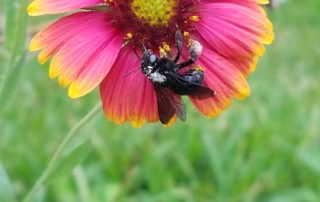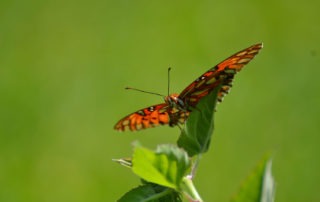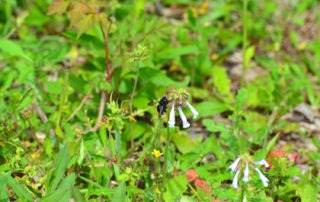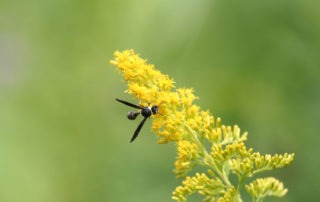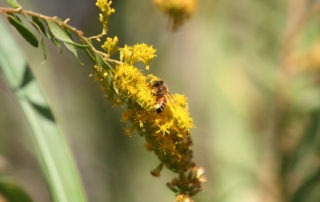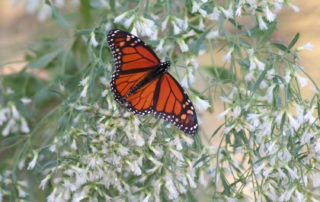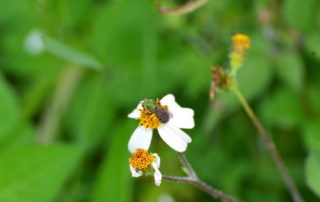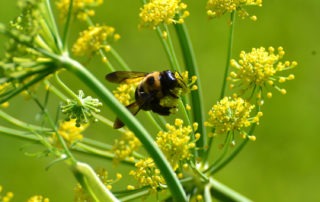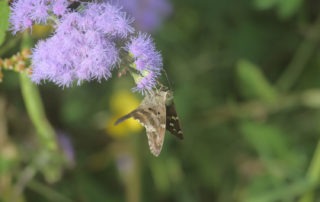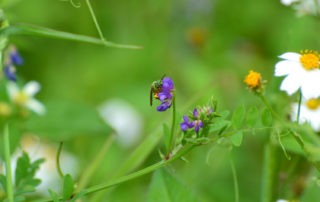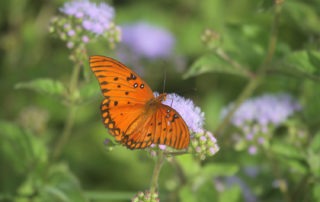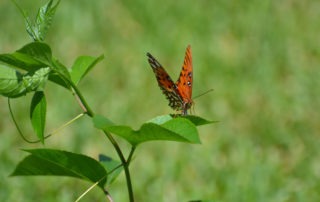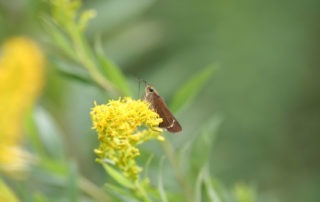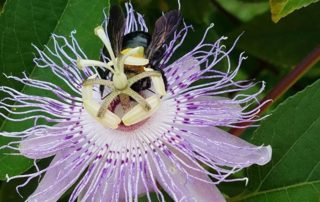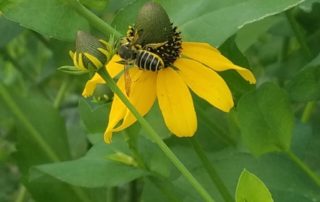1. Reduce the Size of Your Lawn – Replace with Gardens
Did you know the number of lawns in the U.S. is equal to an area the size of New England? Lawns are food deserts for insects and other animals. In addition to providing little to no ecological services, lawns require a lot of water and chemical applications to thrive. Reducing your lawn by half and replacing it with at least 70% native plants will make a huge impact for pollinators and other animal species native to your area. Bonus – it also means less mowing!
2. Go Native! – Plant Native Plants
Native plants are plants that are naturally found in your area. They have evolved to live in a specific region over the course of hundreds of thousands of years and have adapted to local soils, climates, and wildlife. The coevolution of flowering plants and their animal pollinators are a great example of adaptation and specialization. Some pollinators are “generalists” that will feed on a variety of nectars and pollens while others are “specialists” that need one particular species either for feeding or hosting their young.
Exotic plants, or plants that have been introduced from other regions, do not support local food webs as well as native plants. Some exotic species can become invasive, growing aggressively, spreading easily and displacing other native plants. The invasive species lacks the environmental checks and balances such as seasonal weather, diseases, or insects that kept them under control in their native range. Adding native plants into your landscape promotes local biological diversity and is one of the most significant actions you can take to support our pollinators. Check out the Louisiana Native Plant Society website to learn more about Louisiana native plants and where to find native plant resources near you.
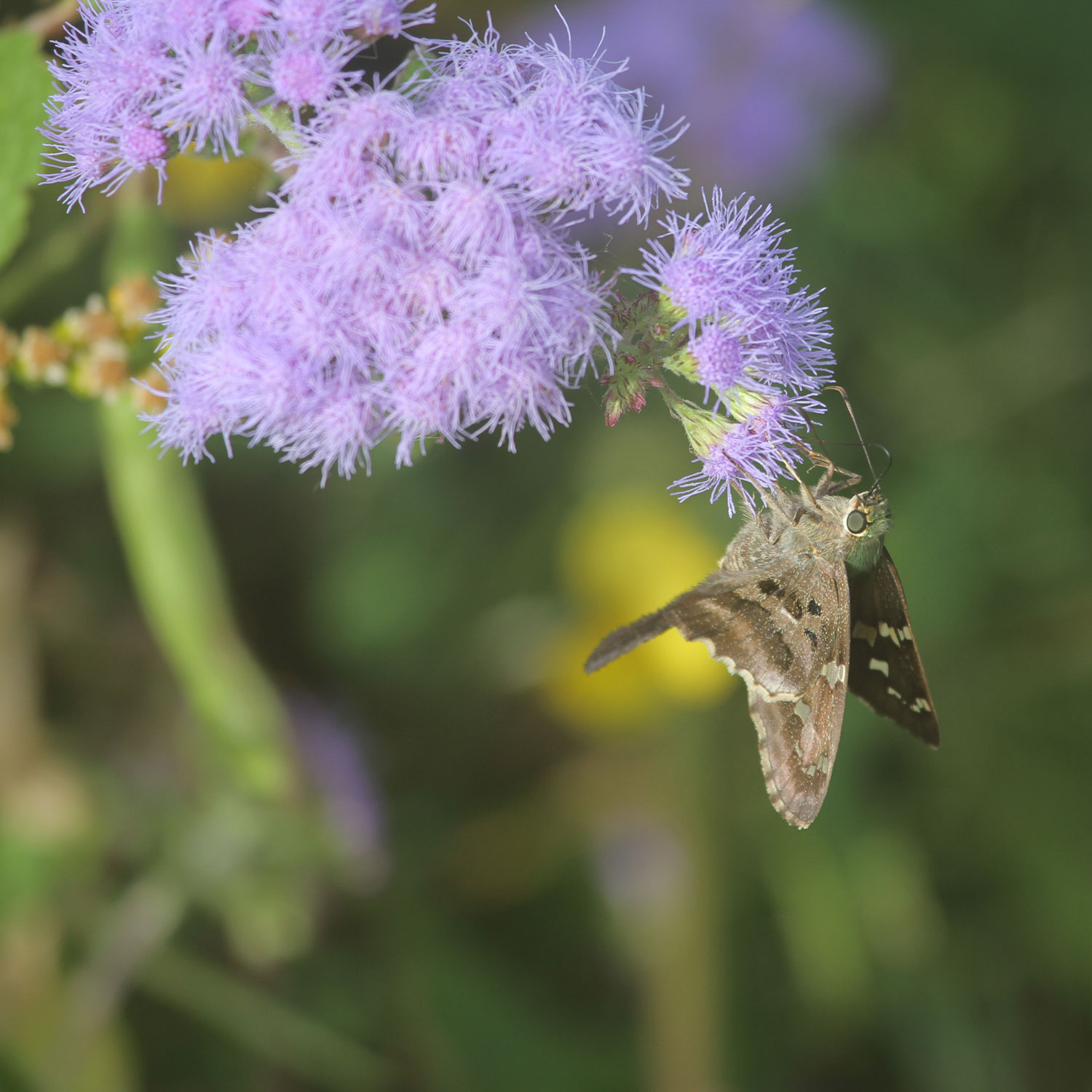
3. Plant a Diversity of Species that Bloom Throughout the Growing Season
Providing plants with flowers that vary in colors, shapes, and sizes will also increase your pollinator diversity. Pollinator syndromes describe flower characteristics that may appeal to a particular type of pollinator. The flower type, shape, color, odor, nectar, and structure vary by the type of pollinator that visits them. It is best to clump the same species together in a planting and to make sure you are providing plants with staggered bloom times to ensure that you’ll always have something blooming in the spring, summer, and fall. Check out the Native Pollinator Plant Guide for the Southeast Region created by the Xerces Society and start creating your plant list today!
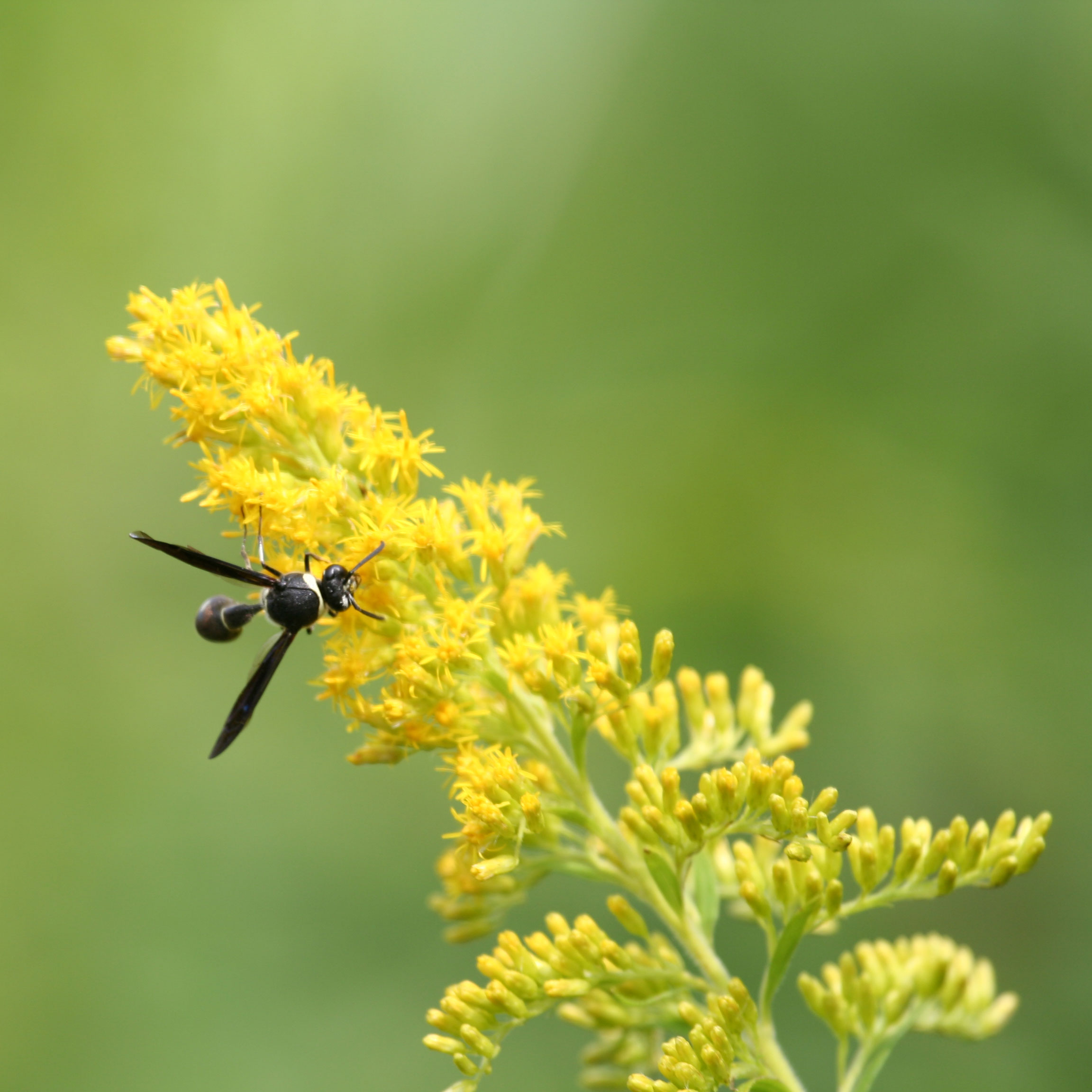
4. Provide Shelter and Nesting Sites for Pollinators
There are many ways to provide shelter and nesting plants for pollinators. One simple way is by providing uncompacted bare soil for ground nesting native bees. 70% of native bees nest in the ground. Consider using compost or shredded leaves for mulching instead of wood bark mulch and avoid tilling in the early spring to help ground nesting bee species. Solitary bees such as leafcutter bees and mason bees need cavities to nest in dead wood, hollow stems, or brush piles. Cavity nesting bees will use the dried stem and twigs from the previous years’ growth in plants with pithy stems such as Joe Pye weed, giant ironweed, and elderberry. Leaving the dead branches is best, but if you do cut them wait as late in the spring as possible giving the bees more time to emerge. If you do cut the branches, you can gather them into small bundles and hang them under a sheltered area to make a small “bee hotel” for future nesting bees to use. Be sure that one end of the stem is closed, bees will not use a stem that is open at both ends.
Bumble bees are social nesters that create small colonies in cavities above or below ground. Building a brush pile is one of the best things you can do for bumble bees to nest, as they like to use abandoned burrows created by small mammals to nest in. During the wintertime, it’s important to provide pollinators and other insects with food and shelter in the form of fall leaves and dead plant material. Raking up and bagging your leaves is taking away essential food and shelter for butterflies, bees, moths, and many other beneficial insects. If you have to remove the leaves from your lawn, make a leaf pile in a corner of your yard or use it as mulch in your garden, a pollinator will thank you for it! #Leavetheleave
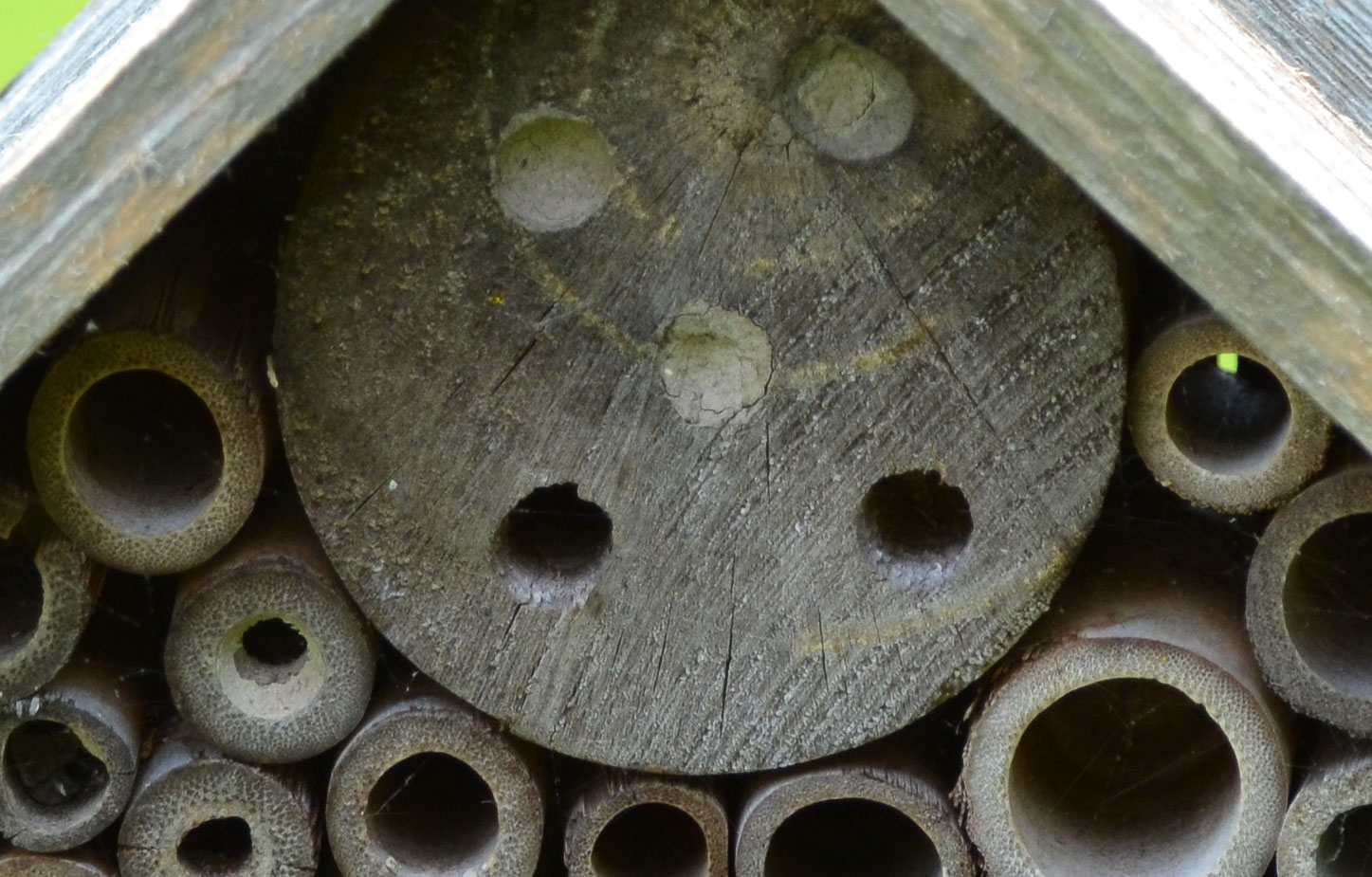
5. Plant Host Plants
Butterflies and moths lay their eggs on hosts plants, which are certain trees, shrubs or herbaceous plants that provide food and shelter for their caterpillars. The butterfly or moth has coevolved with a certain species of plant, or several different species, over thousands of years to be able to adapt to the plant’s chemical defenses. For example, the monarch butterfly’s host plant is milkweed. No milkweed, no monarch butterfly. Adding host plants to your yard is another important step for pollinators such as butterflies and moths and the caterpillars they produce will also help our native bird species feed their young. To find out which plants are hosts plants native to your area, enter your zip code at the Native Plant Finder website!
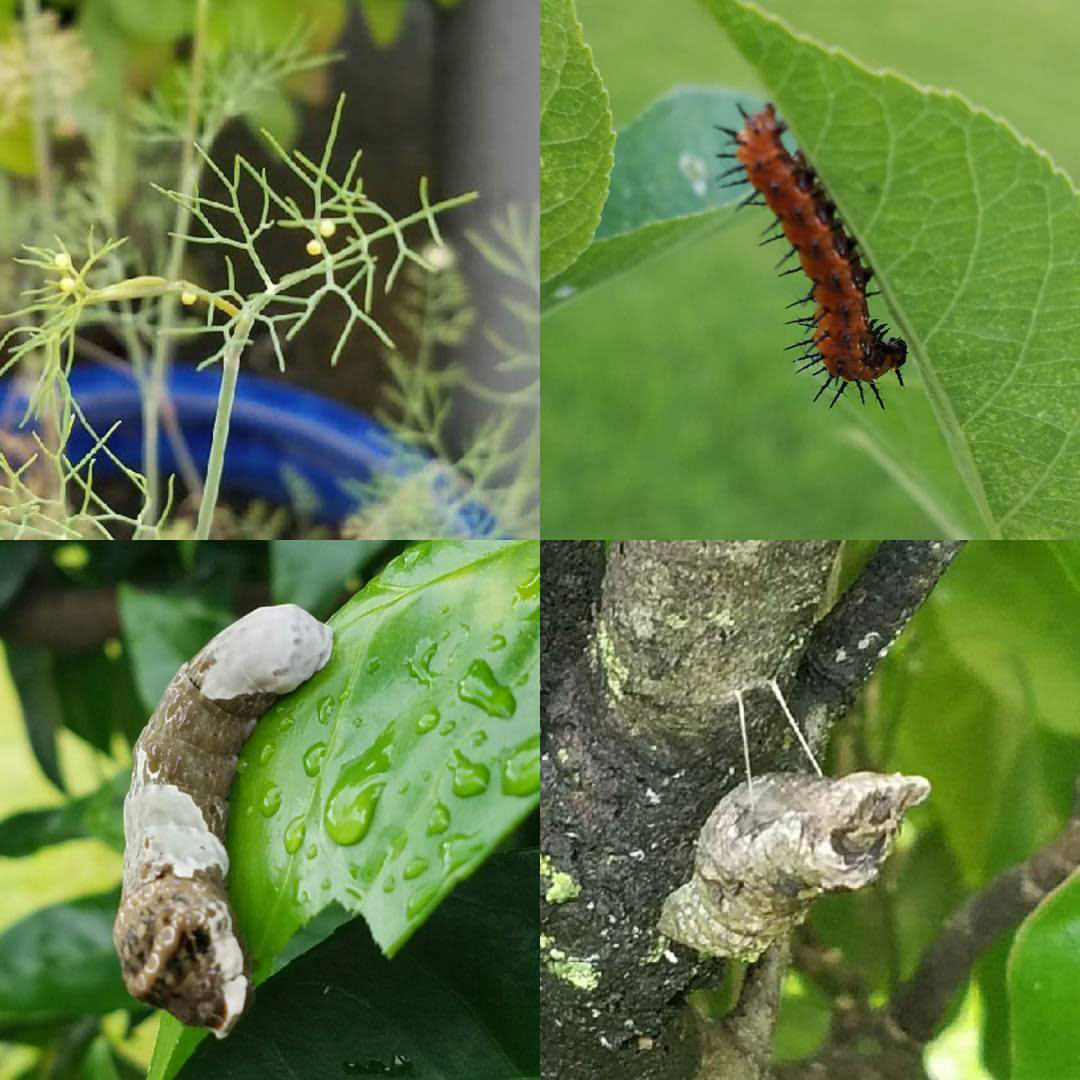
6. Avoid Using Pesticides
Each year in the United States, more than a billion pounds of pesticides are applied across homes, gardens, parks, and farms. Pesticides are used in both agriculture and urban settings throughout the world to kill invertebrate pests, diseases, and weeds. Only a very small number of invertebrates are considered pests compared to the number of invertebrates that are not. Many pesticides, including insecticides, fungicides, and herbicides also harm beneficial insects including pollinators. Their negative effects include removing plant resources that are thought of as weeds, interfering with the pollinator’s reproduction, navigation, memory, and death. Neonicotinoids are very toxic to beneficial insects such as pollinators and they contaminate rivers and streams. Tebuconazole, a fungicide used in turf maintenance is classified by the EPA as a possible human carcinogen and has been linked to harm pollinators.
One way to help eliminate pests is to consider replacing plants prone to disease or pests with tougher, low maintenance species. Using pesticides for cosmetic use in urban areas can be avoided by accepting a few weeds and minor plant damage which don’t impact the overall beauty of an area. Some insects are predators or parasites of other insects, by increasing your plant diversity you’re providing habitat for more pest predators to help keep pests in check. Companion planting for vegetable gardens is the purposeful placement of plants next to each other such as planting radishes next to cucumbers to attract the cucumber beetles away. If you think a pesticide is necessary, contact your local extension service for advice and choose a pesticide with the least impact on pollinators.
7. Spread the Word and Become an Advocate for Pollinators!
- Add a pollinator habitat sign to your garden
- Sign the Pollinator Protection Pledge
- Become a Certified Bee City USA
- Become a Certified Bee Campus USA
- Become a citizen scientist – use the iNaturalist app to document pollinators, plants, and more to contribute to a database used by scientists around the world. Click here to find more citizen science opportunities!
Additional Resources for Pollinators
